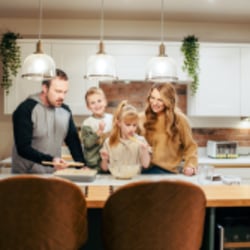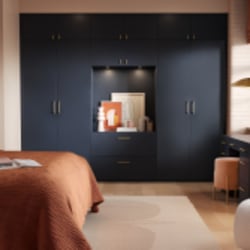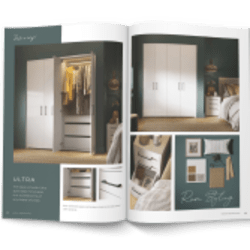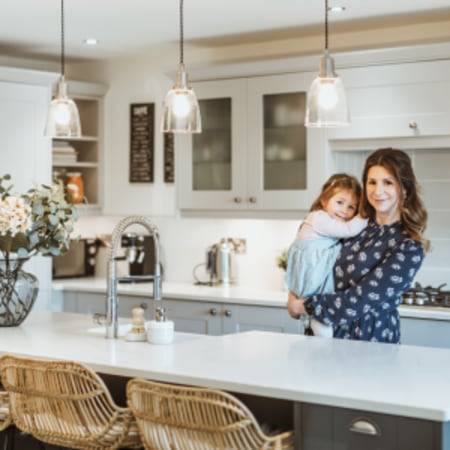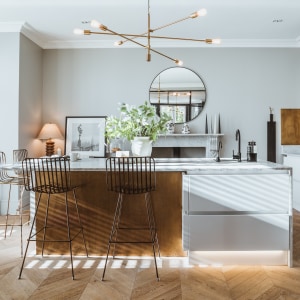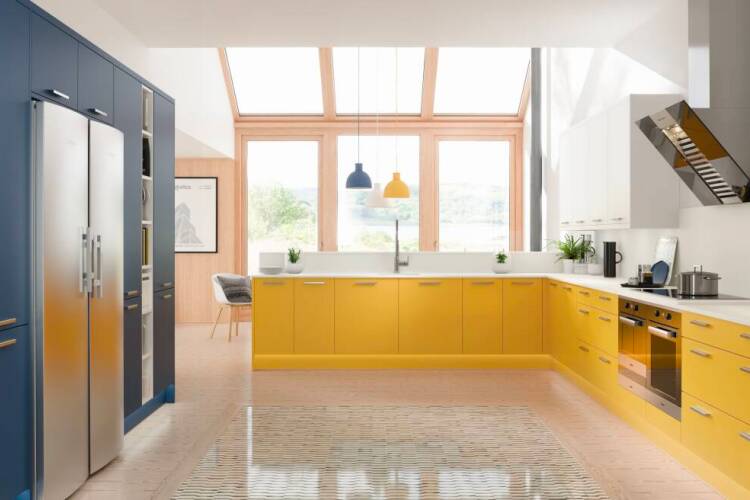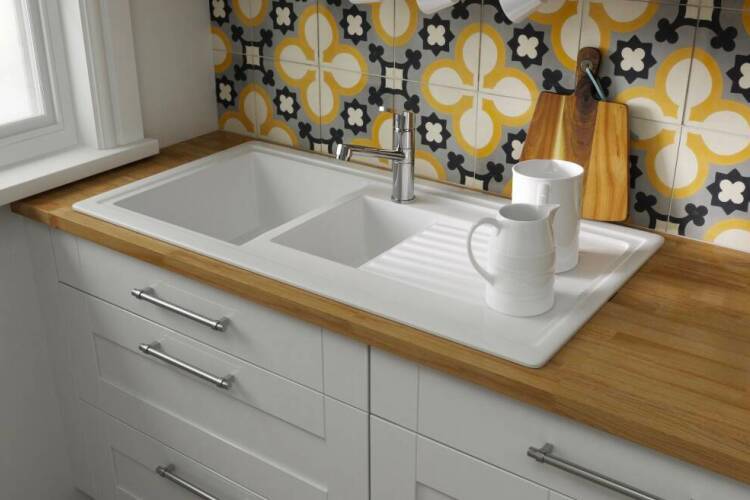What you need to know before painting your kitchen walls
Colour ideas
Painting your kitchen walls is a little bit different compared to the rest of the home. Cooking can create moisture, grease, and smoke, which in turn can have an impact on the entire area – including the walls.
Here, we'll talk you through everything you need to know about painting your kitchen, including what colour might be best for your kitchen, how to prepare the room, what type of paint you'll need, and how to finish the overall look.
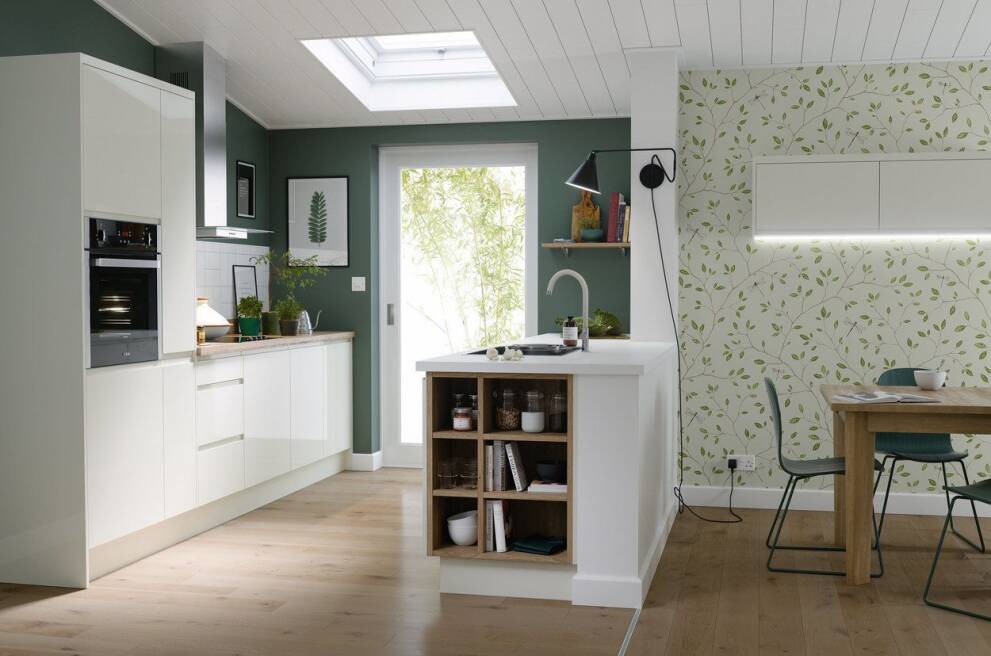
How to choose paint colour for the kitchen walls
The colour paint you choose will contribute to the entire atmosphere in your kitchen, and so it's important to find a shade that suits your theme and your general layout. Certain colour schemes tend to work well in specific types of kitchens, promising to give your space a timeless appeal.
Warm and cosy with neutral colours
Warm and neutral colours will create a welcoming atmosphere and provide a great foundation for your kitchen units and accessories to stand out. Look for tones like soft beige and creamy white, or add a splash of colour with pastel tones like pale pink, powder yellow, and baby blue.
Neutral colours can be styled across the entire room and look great when paired with natural textures, such as wood units or granite worktops.
Fresh and modern with bright white
A classic choice for the kitchen, bright white can make a statement without overwhelming the room. Great for both traditional and contemporary kitchens, consider choosing white, handleless kitchen units with a gloss finish for a minimalist design, or white shaker cabinets for a classic design.
Injecting a few dark colours on your worktops or walls will help to add definition to your space, while a statement accessory such as a red range cooker can add a daring spin.
Statements in cool colours
Cool colours such as blue, purple, grey, and green are incredibly versatile, making them a great choice for a coloured statement wall or feature. There are plenty of ways to inject a bold pop of colour into your scheme – choose a kitchen island or a row of cabinets that contrast with the rest of your layout, or paint the main wall in a bright, eye-catching shade.
Balance out the effect by using neutral tones across the rest of your kitchen – coordinating cool colours include ash grey, chalky white, or very pale grey-blue. Learn more about feature walls with how to add a colourful feature wall to your kitchen.

How to prep your kitchen walls for painting
Unless you are painting drywall in a brand new kitchen, it's essential that the walls are cleaned before you begin decorating:
- 1Dust the whole room: Start off by dusting, even in areas where you don't plan on painting. This will remove all cobwebs and debris from the room, reducing the risk of any dust sticking to wet paint.
- 2Clean the walls: All walls in the kitchen will need washing with a combination of warm water and washing up liquid. Heavily used areas, such as those around the hob, oven, and around preparation space, may need a stronger solution to remove grease or smoke marks. Once cleaned, wipe down the walls with clean water to remove soapy residue and leave to dry completely.
- 3Check and fix mould: If you have any mould around your sink or windows, this should be treated in advance of painting. Minor amounts of mould can be treated with water combined with either chlorine or sodium hypochlorite (each four parts water to one part chemical) sprayed on to the mould. Serious mould issues should be treated by an expert.

What is the best type of paint for kitchen walls?
Interior paint has a finish that ranges between matt (non-reflective) and high gloss (very reflective). Finishes like eggshell, satin, and silk fall somewhere in the middle of this scale. Some paint brands offer a special kitchen mix, which can be available in anything from matt to gloss. These mixes will be specifically created to be easy to clean and maintain.
If your chosen shade isn't available in a kitchen mix, mid-gloss finishes, such as satin and silk, are traditionally the best choices, as the texture makes them easy to clean and wipe down on a regular basis without affecting the paintwork.
Matt paint has also been developed to be easily cleaned and wiped, so if you prefer a non-reflective surface, check the manufacturer's advice before you buy.

How to paint the kitchen walls
Now you've cleaned the walls and chosen your paint, it's finally time to paint the walls! Before you start, ensure the units and floor are well covered to avoid any drips and splashes, as these can be difficult to remove once dried.
The type of tools you'll need to use are largely dependant on the amount of wall space in any given area of the kitchen. Large, empty walls can be painted using a roller, which is the most efficient way to cover a large space.
Smaller areas of wall space can be painted with a very small roller for an even finish, or with a brush if the space is too narrow to allow a roller to be used effectively. Edging around the windows, door frames and worktops should be carried out with a slim brush, with the very edge of the unit or frame covered with masking tape for a seamless finish.
Decorating your kitchen is an exciting time and choosing a new colour scheme is a great way to revitalise the look and feel of your home. Explore our design and décor ideas for more inspiration about creating your dream kitchen.

